Halfmoon Plakats...
We are planning to base our streamer on this design for our Betta Show...
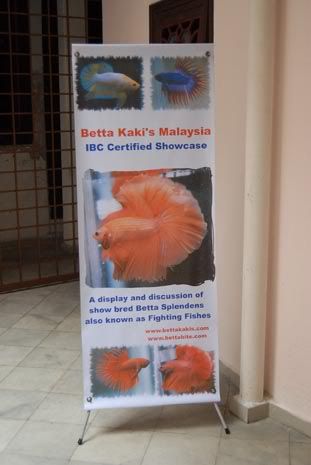
Results 151 to 160 of 12139
-
10-14-2008, 11:13 PM #151
-
10-14-2008, 11:17 PM #152
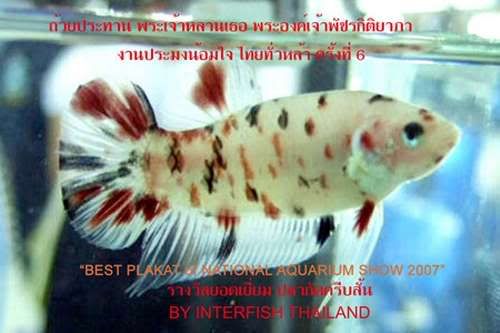
This unique red/black/white polka-dotted plakat gives fine evidence of the almost endless variety for colour and pattern possible when breeding Betta splendens. He was awarded the "Best Plakat" distinction at the National Aquarium Show, 2007.
-
10-14-2008, 11:20 PM #153
Essential to understanding how the Betta matures we must know a key fact about their anatomy. Bettas are labyrinth breathers, which means they can use, and indeed require, atmospheric oxygen to live. The name 'labyrinth fish' refers to their accessory breathing organ that allows them to do this. This sac-like organ is located just above the gills and is shaped into bracket-like layers which is supported by lamellae. It is this body plan that directs the general aspects of Betta behavior.
Life for a Betta begins in a delicate nursery of bubbles at the surface the water. This bubble nest is created and cared for by the male parent. Using the accessory breathing organ, the male blows air through his mouth, and as this air passes it picks up secretion from a set of cement glands in the mouth. This makes the bubbles adhesive to one another and the vegetation and makes them long-lasting. Nest building activity occurs when temperature is in the normal breeding range of 77-86 degrees Fahrenheit. After creating the bubble nest the male is ready to spawn. Sexual attraction is based on color. Males and females of the same basic coloring are more attracted to one another. As opposed to most other species where the female is less colorful than the male, the female betta has similar color intensity but shorter fins. The relationship between the male and female Betta is far from a sweet romance. If the female swimming by the nest is either sexually inexperienced, too young, or in poor condition she will dart quickly from the area and this provokes a chase by the male. This pursuit may end in a vicious attack by the male. If the female doesn't respond soon she may be killed. If responsive, the female will simply calmly swim under the nest and courtship begins. The courtship sequence begins with the male raising his fins up and extending his gill covers in a 'display' to the female. They will begin to swim side by side, alternately stopping to present the side-view of their bodies with raised fins. When the female is receptive, she approaches the male under the nest in a head-downward an submissive expression, with fins held closely to the body. The male encircles her and wraps his body around her, and the eggs are released as the male ejaculates his sperm to fertilize them. The mating pair will repeat these embraces for up to 6 hours, until the female retreats (or is chased) from the nest site. The male stays behind to 'keep house' for at least 3 days following. The male can be sure of paternity of the eggs because fertilization is external and the territorial nature of the Betta wouldn't allow another male into the nest site. This territoriality in paternal care is associated with external fertilization in many species, not just the betta. Betta eggs are heavier than water and prone to sinking. The male catches them tenderly in his mouth and blows them back up into his bubble nest which helps keep the eggs afloat. The importance of the eggs being near the surface is gas exchange and an increased availability of oxygen so development is at a maximum.
Bronstein's studies in 1982 showed that 'eggs floating at the water surface were more likely to develop than those submerged 10 cm' (Bronstein 1982,150). Bronstein also showed that eggs can develop without a caretaker, but that the 'presence of a male caretaker improved reproductive efficiency' (Bronstein 1982,151). Bronstein found that, in addition to keeping eggs afloat, males were also guarding them from a deadly saprotegniid fungus that grows among the eggs and fry at the water surface (Bronstein 1982). Still unknown is whether or not this protection from the fungus is physical or chemical. However, just as deadly as the fungus are other small microorganisms and insects that can infect the eggs and cause abnormal development. The male will gently clean off these pests from the eggs with light scraping motions. However, if necessary the male will also eat the abnormal eggs that aren't fertilized or have developed improperly. The male not only protects against small deadly organisms and culls out the weaker offspring, but as he is very territorial, will warn other adult bettas from the nest so they don't eat all his offspring. Although he is an attentive parent, the male isn't sequestered during this time and may spawn with other females or attack males entering the territory.
The accessory breathing organ is most important to the betta's life and it develops the earliest when fry are 4-5mm length since this is the first stage at which they can break the water's surface to the oxygen above. At one week the fry spend most of their time scouring for microscopic food particles since by this time they have long since used up their yolk sac and must begin to forage. At 80 hours the fry are developed enough to find shelter and it will tend to hide out as much as possible in the surrounding vegetation. When just 14 days old the young betta's accessory breathing organ is still developing and it can surface but will not exchange air. Adult form and pigmentation develops at about 21 days. The most crucial stage for young bettas is this first 21 to 30 days as it is during this time that many die due to starvation, or temperature of water and the air above not being warm enough. Males are full grown when they reach about 2 and 3/8 inches and females are a little smaller. Out of the 100 to 600 eggs originally spawned, only about 30 will develop and fewer than that will actually make it to the adult stage. Responsibility for this resides with the male parent and his attentive parental care when the embryo is developing, but is also due to the parent/offspring conflict that continues through all stages of development. Bettas are immediately autonomous after fertilization. The embryo is self-sufficient and the male adult's parentage is simply to ensure that his genes will be passed onto the next generation. If there is a shortage of food the adult will eat the young fry if it can't find shelter fast enough. This is a result of natural selection since, with a shortage of food, the possibility that the fry can develop fully to reproductive status is slim, and the male can use the nutrition till better conditions return and then he can court again. As the fry develop we see a drastic change in their mode of nutrition. They get nutrition as embryos from a yolk sac that forms after fertilization and nourishes them throughout the earliest stages of development. They grow quickly, however, and soon begin to feed on tiny copepods and shrimp. As their jaws develop they will begin to eat slightly larger shelled arthropods organisms. Once they reach the adult stage they will primarily devour aquatic insects and will destroy snails with their powerful jaws.
-
10-15-2008, 03:48 PM #154
murag na pusa man bei..dn gkaon mga gagmay..ako gbalhina ang male na bei..ambot sakto bah ni..bago pman pusa..ako balhin daun bei..ky kaon naman, dn kita ko gagmay, pag balhin nko sa laki, na pa gani fry bei....butangan nko daphnia na..mayta na mabuhi..he.he..wa ta kita ganina bei..namalit fud ko ganina daphnia...wko kta ako cell gd..tawag manday ka..cnxa bei...
-
10-15-2008, 04:38 PM #155
-
10-15-2008, 07:26 PM #156
salamat bei....up up for ABA...and the goods....mayta nay mabuhi jud bei..
-
10-15-2008, 07:41 PM #157
Taud taud nako wala ka post dah

ako existing fries karon
1) Super redHM male x red HM fm
2) Red Dragon HM male x Mustard Gas HM female
3) Black orchid CT male x BO female CT
4) Orange DRCT
5) Yellow DRCT
6) Opaque DRCT
mag 1 month nani this week
-
10-15-2008, 10:42 PM #158
-
10-16-2008, 06:22 PM #159
-
10-16-2008, 07:50 PM #160
Advertisement
Similar Threads |
|




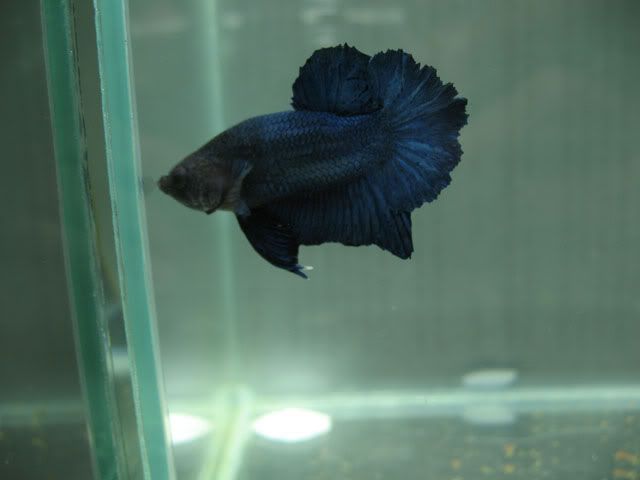
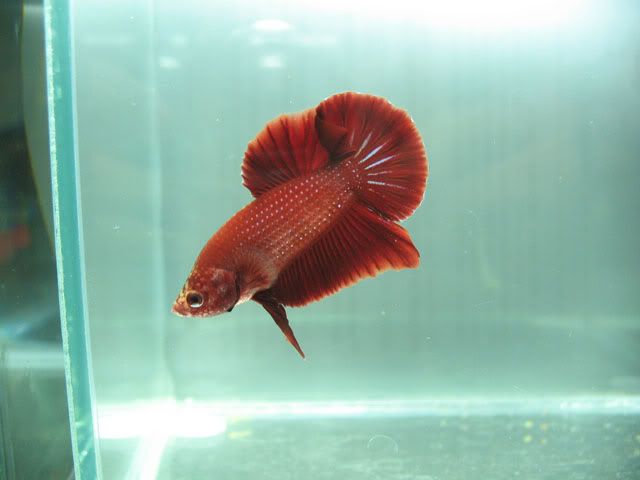
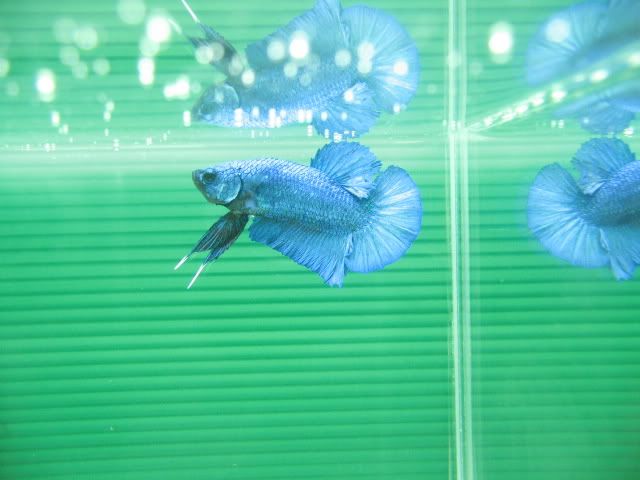
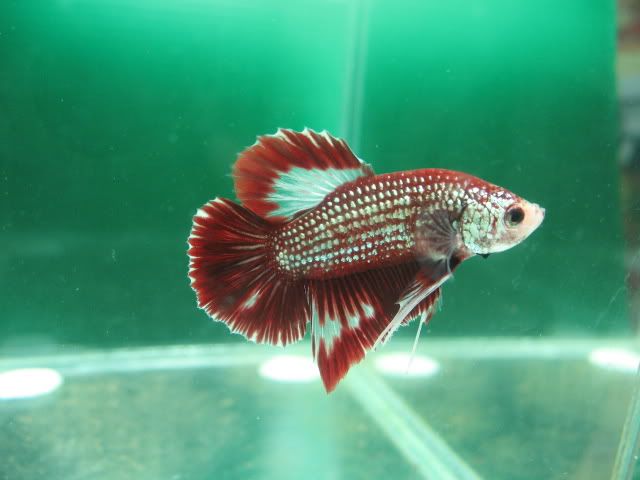
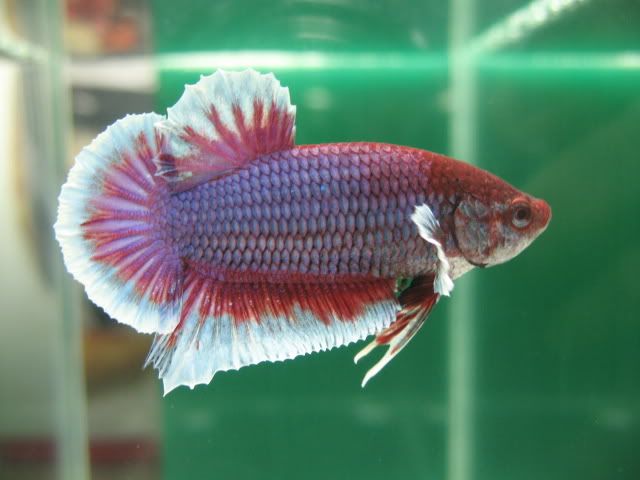
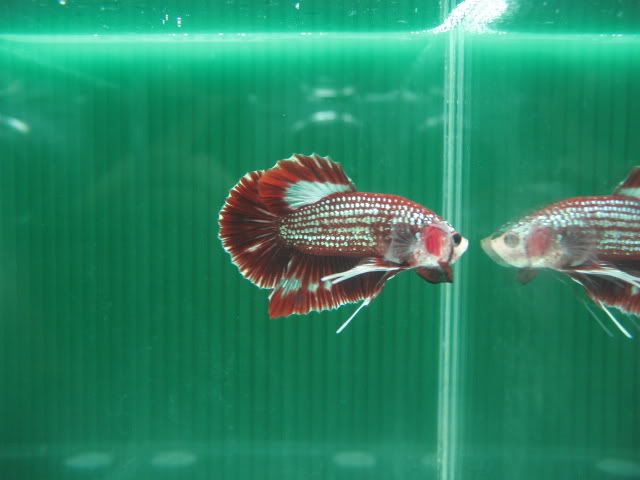

 Reply With Quote
Reply With Quote


